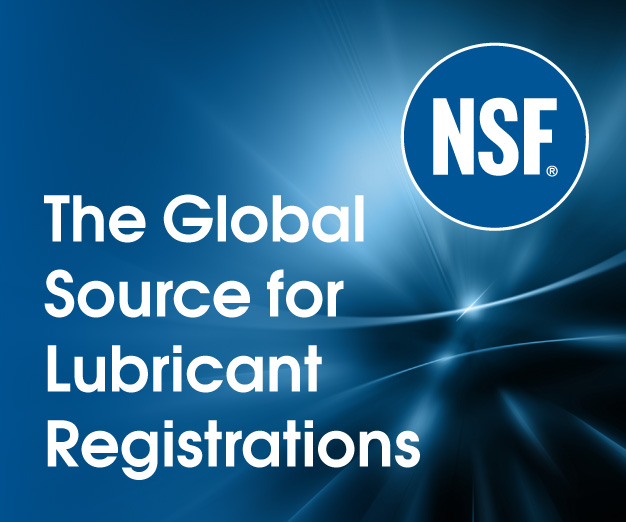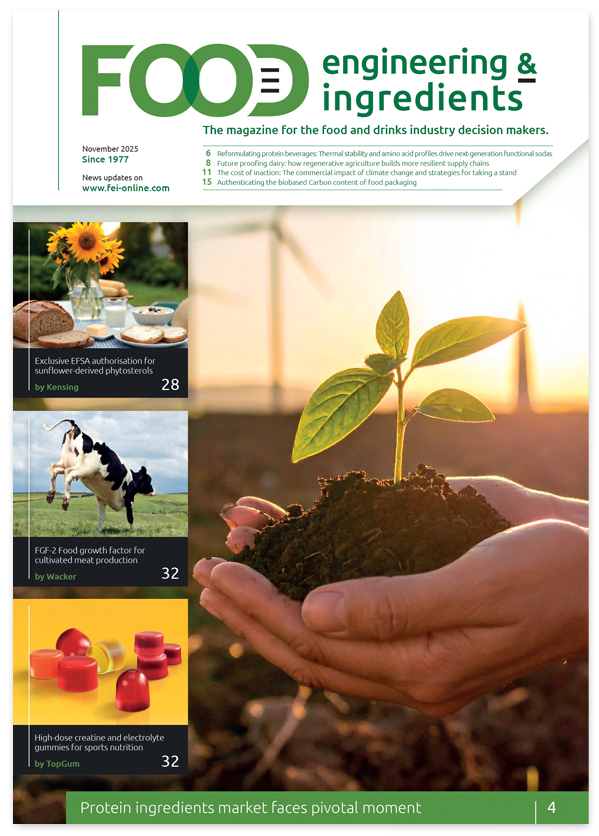Vegan fish – a sustainable alternative for consumers
Loryma, a specialist supplier of functional ingredients made from wheat, has developed an innovative concept for vegan fish. Food Engineering & Ingredients talks to Norbert Klein, Head of R&D, about how it is processed, the market opportunities and the many possible applications for plant-based fish substitutes.
Food Engineering & Ingredients: As I understand it, Loryma develops all its products — starches, proteins, etc. — from wheat. Can you explain briefly why the company has this focus only on wheat to develop its products? What is so special about wheat? Norbert Klein:
Loryma has been involved in the development and production of wheat-based ingredients for more than 40 years. For the food industry, Loryma supplies wheat starches and functional blends, as well as textured wheat proteins for the production of vegetarian, vegan or hybrid meat alternatives. By focusing on this single raw material, we get the best out of every grain and unlock the power that’s inside. In terms of future-oriented meat alternatives, for example, wheat offers great potential: first of all, it contains nutritionally important constituents, such as amino acids and proteins. Secondly, with a yield of 99%, wheat is an environmentally friendly and crisisproof raw material that can be used in its entirety. Loryma is part of the Crespel & Deiters Group, which, in addition to serving the food industry, also produces wheat-based ingredients for animal feed and technical applications such as adhesives and paints. As such, there’s no waste, transport-related emissions are minimised through regional cultivation (75% comes from Germany, the rest from the EU) and the crop is strictly controlled, free from pollutants and genetically unmodified.
FEI: Can you explain briefly how you convert wheat into your various products – and what industry products you are able to develop from wheat?
NK: Once the grain is split into its components, we combine them to create functional ingredients that subsequently optimise the texture and nutrient profile of different products. They can be used to improve the structure, binding and mouthfeel of vegan and vegetarian alternatives, meat and baked goods, as well as cereals, convenience foods and snacks. These added-value natural components provide the bite in vegan burger patties or plant-based seafood and give snacks and bread-crumbed applications just the right crunch. Actually, our functional raw materials can replace conventional ingredients with e-numbers in many ways. [E numbers (“E” stands for “Europe”) are codes for substances used as food additives for use within the European Union (EU) and European Free Trade Association (EFTA). Commonly found on food labels, their safety assessment and approval are the responsibility of the European Food Safety Authority (EFSA).]
FEI: Vegan fish is relatively unknown so far. Why do you think plant-based fish alternatives are important?
NK: As recently documented, the plant-based market trend has retained its top-three position as an industry driver for the last three years and will no doubt further increase demand for fish alternatives [according to Innova Market Insights, Top Ten Trends for 2021].
Veggie fish products have not been in the spotlight as much, but that’s about to change; we believe there’s huge potential. The global plant-based fish market is expected to grow by 28% until 2030 because of the many ecological and ethical reasons why people want to avoid or minimise the consumption of animal products [see Future Market Insights report: https://www.futuremarketinsights.com/reports/plant-based-fish-market].
In the case of fish, the main concerns are the amount of unusedb y-catch and their exposure to medicines, pollutants and microplastics; the general desire for greater animal welfare also plays a role, as does digestive intolerance. The need for industry action is put into sharp focus when we look to the future: In the long-term, we may well experience a shortage of fish if things don’t change. And it’s not just the result of overfishing, it’s related to population growth and the associated increasing demand for macronutrients such as protein, carbohydrates and omega-3 fatty acids.
FEI: Why is there this growing demand for vegan food?
NK: Climate protection, sustainability and food waste are topics that not only made headlines last year, they’ll continue to dominate consumer consciousness in the future. The world population is growing and, with it, so is the demand for food. The question of how to sustainably feed around ten billion people in 2050 is complex and multifaceted. Yet, what is certain is the fact that the availability of high-quality proteins will play a key role. Here, wheat proteins have great potential. As an ingredient, they can supplement meat in numerous applications or even replace it completely. And, in combination with the appropriate seasoning mixtures, plant proteins offer a variety of solutions with high added value.
FEI: What does it take for a plant-based fish alternative to be successful in the market?
NK: The decisive factors that determine market success are the same for fish and meat alternatives. The product must authentically replicate the original animal in terms of texture, taste and colour. Only then does it become a true alternative to what consumers know and love. By combining different wheat-based ingredients, we have succeeded in creating a texture and thus a mouthfeel that, when combined, is extremely similar to the muscle meat of fish. As all the ingredients are flavour-neutral, the product can be customised with flavours and seasonings.
FEI: A number of components are used – Lory Stab, Lory Bind and Lory Tex. Can you tell us more about these components?
NK: The modularity of our concept provides sensory flexibility in terms of taste, colour and texture, which means we can produce vegan white fish meat, such as halibut and cod, salmon fillets and even tuna. From bite-sized pieces to fillets, the size and shape of our products is also very flexible. And, by combining them with our functional breading, we can even make fish fingers and baked fish, which might be particularly interesting for the convenience sector. The wheat ingredients prevent bubble formation while frying, optimise adhesion between the crumb and the product and enable a short ingredient list.
Our vegetable fish products consist of two components: Lory Stab, a functional blend of wheat proteins and starch, can be used to replicate the species-typical muscle tissue of fish meat, whereas Lory Bind provides internal binding and a specific mouthfeel.
To meet the challenge of recreating different types of fish, the firmness can be modified via the content of the binding component. In this way, the typical bite that consumers are used to from animal products is achieved. To imitate the rather firm flesh of tuna, for example, extruded wheat proteins from the Lory Tex range can be incorporated.
FEI: Do manufacturers need special equipment to implement the concept?
NK: All our ingredients are easy to handle and process. Manufacturers can use standard food production equipment to implement our concept. Furthermore, a variety of industrial-scale production processes and final product preparation can be simulated in our versatile new test laboratory at Zwingenberg near Frankfurt. Here, we also design individual solutions for our customers and conduct test runs and training courses. Research on product development and individual customer service is highly important to us. We know that consumers place great emphasis on natural and sustainable end products that combine enjoyment and nutrition. To respond to current market demands, we support manufacturers with our expertise, high-quality functional ingredients and customised solutions.
FEI: There are many types of fish with different flavours? Do you develop flavours in-house or are they from a third party?
NK: Wheat-based ingredients are odourless, tasteless and their flexibility allows them to be used in a wide range of applications. Any kind of fish or meat product can be replicated in various forms and colours. The challenge lies in achieving a perfectly matched seasoning mix, which is something that cannot be “borrowed” from conventional meat products because other spice notes and significantly higher dosages are required. In this area, Loryma is working with well-proven partners.
FEI: How long was the product in development and what were some of the main challenges you faced in developing vegan fish – such as creating the right texture, for example – and how did you resolve them?
NK: Developing the concept took about seven months. One of the main challenges was to find a way to reproduce individual fish muscle segments and link them together. It was important that the texture of the fish alternatives differed significantly from that of the usual meat analogues. Unlike meat, fish has no connective tissue and is therefore rather moist and crumbly to the bite. We needed to reflect this impression in the vegetable alternative and were able to do so with a two-phase production system based on our wheat proteins and other hydrocolloids. As a result, we’ve been able to dispense with the otherwise customary use of texturised proteins (e.g. Lory Tex).
FEI: From the consumer point of view – there are several health benefits from eating fish – such as fish being a source of omega-3 fatty acids as well as several important vitamins and minerals. Are these being supplemented in your vegan fish?
NK: Currently, fish is one of the most important sources of omega-3 fatty acids. In the future, however, alternatives will be required. According to a Canadian study, around 96% of the world’s population will be affected by a shortage of the omega-3 fatty acid DHA by the year 2100. Why? Because the amount of omega-3 fatty acids that can be obtained from wild and farmed fish will be drastically reduced as a result of climate change and ocean warming [see: Food and Agriculture Organization of the United Nations (FAO) (2020): The state of world fisheries and aquaculture, p.67]. Wheat-based fish applications can easily be enriched with vital substances, such as omega-3-rich oils from microalgae. And although high-quality proteins are a natural part of wheat’s make-up, the content can be further increased by adding our Lory Protein component.


